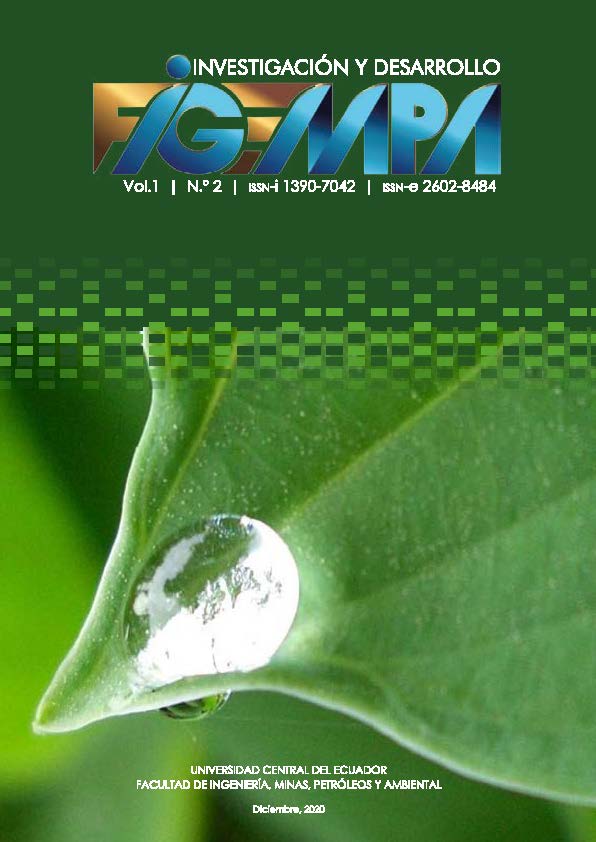Análisis de costos operativos en pequeña minería y minería artesanal en Nambija
Contenido principal del artículo
Resumen
En el desarrollo de la actividad minera en pequeña minería y minería artesanal en Ecuador en varios casos no se lleva un registro de los costos operativos que demanda cada tarea realizada en el ciclo de trabajo minero, en consecuencia, no se conoce al final cuales son los costos de inversión en contraste con la recuperación económica alcanzada. El objetivo de este trabajo fue analizar los costos operativos en cada tarea realizada en el ciclo de trabajo minero en tres labores del sector de Nambija, con la finalidad de evidenciar cuales son los costos que se ocupa en realizar la tarea de perforación, voladura, ventilación, desate, limpieza del frente de trabajo, cargado y transporte del material arrancado que comprenden un ciclo minero de trabajo.
Descargas
Métricas
Detalles del artículo

Esta obra está bajo una licencia internacional Creative Commons Atribución-NoComercial 4.0.
Citas
Agencia de Regulación y Control Minero (ARCOM) (2013) Resolución N.° 001-ins-dir- arcom-2013. Quito: s. n.
Alianza Mundial de Derecho Ambiental (ELAW) (2010) Guía para evaluar EIAs de proyectos mineros. s. l.: s. n.
Arteaga Rodríguez, R. et al. (1991) Manual de evaluación técnico económica de proyectos mineros de inversión. Madrid: s. n.
Banco Central del Ecuador (2018) BCE inaugura oficina en Machala para comercializar oro con mineros pequeños y artesanales.https://www.bce.fin.ec/index.php/boletines-de-prensa-archivo/item/1039-bce-inaugura-oficina-en-machala-para-comercializar-oro-con-mineros-pequenos-y-artesanales
INIGEMM (2012) Geología Regional y Local de Nambija. Proyecto Rehabilitación Nambija. Quito: Instituto Nacional de Investigación Geológico Minero Metalúrgico.
Jiménez, P., Indhira, M., Molina, E. y Jorge, M. (2006) Propuesta de medición de la productividad en minería de oro vetiforme y reconocimiento de estándares productivos sostenibles. Boletín Ciencias de la Tierra; 1, 73-86, 0120-3630.
Ley de Minería (2018) Ley de Minería, Quito, Ecuador.
Ministerio de Minería (2015) Resolución N° mm-czm-S2015-0878-rm. Zamora (Zamora Chinchipe): s. n.
Reátegui Ordoñez, C. (2018) Análisis global de costos en operaciones de minería subterránea. s. l.: s. n.
Vega Farfán, J. L. (2013) Curso: Control de operaciones mineras, Piura: s. n.

